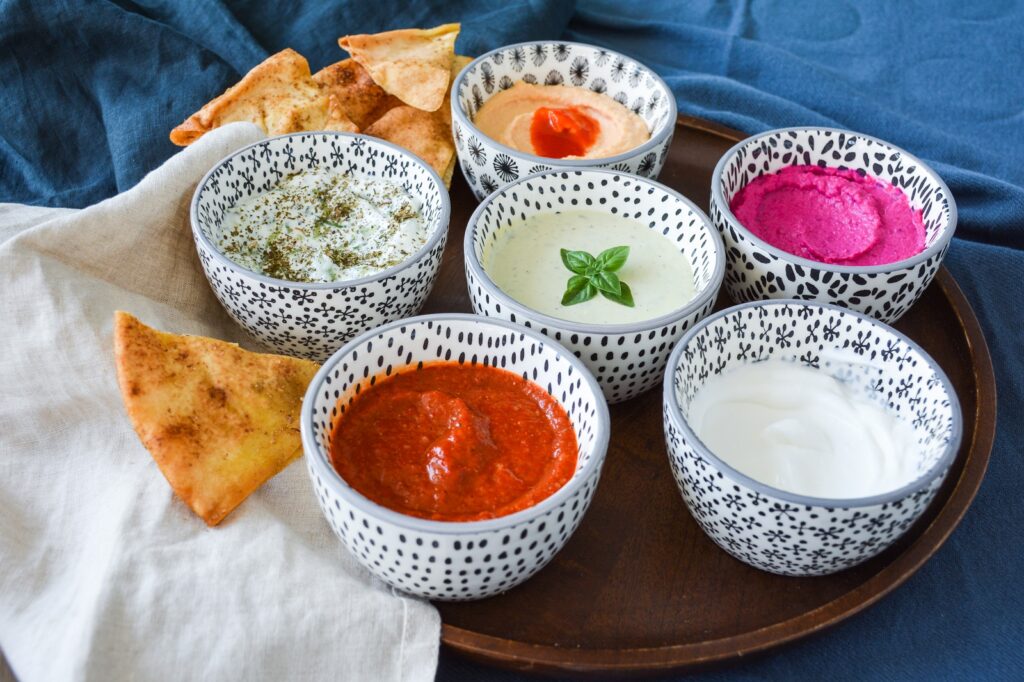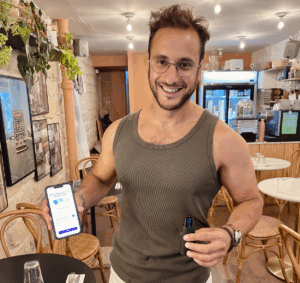FOOD – Eat healthy is a growing demand among consumers. So when you own one or more restaurants, or work in food in general, the question arises of how to introduce “Healthy” into your offering.
As some know, I launched a modern Lebanese restaurant brand whose leitmotif is to eat healthy at the best price, using the great classics of Lebanese and more generally Mediterranean street food, whose ingredients are extremely healthy because based on the Cretan diet (legumes, quality meat, parsley, vegetables, olive oil, etc.).
Furthermore, I also launch a great white paper on the “ideal” diet, which brings together all the often overlooked fundamentals of a perfect diet for health and figure.
I therefore bring together in this post all my thoughts on the different ways to approach “healthy eating” in your restaurant, whether for general restaurants, brasseries, fast-food restaurants or 100% concepts focused on healthy food. You will also find all these ideas on video in this filmed exchange with Thomas from Coach Mon Resto:
Define the notion of Healthy
Before wanting to integrate “healthy” ingredients or meals into your menu, you must first define what healthy is. Because this generic term can take on several meanings based on food trends, dietary dogmas that are in vogue at the moment, popular beliefs, and scientific advances on the subject.

On a generic level, healthy means “healthy”. In other words, it's about integrating healthy products into your menu, or at least recognized as being good for health, and incidentally for the line.
Consumer expectations have been evolving since the 2000s
For several years, consumers have been demanding healthy products, with short supply chains, organic, with less meat, more vegetables, etc.
This is a fundamental trend, which finds its source in several issues:
- The increase in diseases of civilization (metabolic diseases, cancers, diabetes, overweight, allergies, inflammatory diseases, etc.).
- Respect for life and animals, with the aim of reducing the slaughter of massage in favor of low-cost fast-food chains, which serve gargantuan quantities that the human body does not need.
- The return to traditional values and the rejection of mass industry
As a result, there is a tendency to eat better, in reasonable quantities.

But what can be considered good in terms of diet and health? This is the whole question we are going to try to answer, because wanting to add a notion of healthy to the menu is much more complicated than it seems. Indeed, depending on one's beliefs, "eating healthy" can be linked to several dietary practices, sometimes complementary of course, but sometimes contradictory.
Eating healthy, a demand with variable geometry
Here is a non-exhaustive list of several possible avenues:
- Vegetarian or vegan food is the most exploited avenue currently
- Flexitarian positioning
- Respect for seasonal fruits and vegetables
- Organic
- The ecological aspect (short circuits, etc.)
- The equitable aspect (regional farmers, etc.)
- Unprocessed food
- Food low in sugar
- The paleo diet (and therefore rich in meat)
- Sports and protein nutrition, considered healthy by certain nutritionist doctors, and endorsed by bodybuilding and fitness practitioners, who are more and more numerous
- And obviously, homemade food, from raw products, therefore little processed, whether it is rich or low in sugar, vegetarian or carnivorous, etc…
As you will have understood, “healthy” is a multi-faceted concept, and it involves choosing a path based on your beliefs, your business model and the potential market.
Specialized brand or diversification?
Now that we have highlighted the different healthy trends, it remains to be seen what the strategy is. Several avenues are available to entrepreneurs:
- Fast food chains can diversify their offerings, for example by offering premium menus, vegan menus, gluten-free bread in their burger, exceptional foods, organic chicken in their buckets, at a higher price. These are loose ideas.
- Breweries can diversify their menu by offering more elaborate dishes, with the mention “organic, vegan, gluten-free, short circuit, etc”.
- Semi-gastro and gastro restaurants can launch vegan dishes, but also desserts made without sugar, for example, to best match with a premium clientele looking for a gastronomic escape but without the kilos that go with it (the very sweet dessert being a time bomb on a dietary level).
- Finally, start-ups specialized in home delivery of food (and which integrate the entire value chain), can also launch their healthy range, or even launch brands specializing in a particular diet (delivery of low-carbohydrate dishes, delivery of paleo dishes, etc.).
- There are also the “fast-good” who are on the rise. This is a specialization which consists of making fast food, but with quality products.
So it’s a matter of choosing your side:
- Either we diversify our offer, which is recommended for general restaurants or chains
- Either we choose one or more types of power supply compatible with each other, and we create a brand (pure player or physical) specialized in this area. Here, the advantage is to be identified as a reference in a particular field, and to be praised by the “early adopters” of this type of food. But beware of take-off, which risks being long and tedious, because apart from vegan food, all the other avenues mentioned above remain niches on the commercial and marketing level for the moment.
Healthy in a classic or general restaurant
Once you have decided on the type of food you want to add to your menu, all you have to do is choose the dishes you want to add, calling on your chef. , or by looking at recipes on the Internet.
If, for example, you are going with vegan dishes, all you need to do is find out what the key dishes are and add them, making sure to train your teams well.

Then, it is absolutely necessary to highlight so that they are sold, at a price sometimes higher than carnivorous dishes for example. That’s good, the margins are often higher on vegan dishes.
Finally, everything must be coherent, namely that your brand, if it “premiumizes” itself through a healthy offer, must send the “healthy” codes via its decoration, its design, the design of its menu, etc…
In the case of a bistro for example, you should not skimp on the decor, bring plants into your establishment, in order to send the signal that in this restaurant, you can eat healthy. These are simple and effective signals.
The case of a teacher oriented to 100% healthy
In this specific case, it is a specialized brand, which must therefore be a reference in the field. We must then be impeccable across the entire value chain. If it is a restaurant or a restaurant chain, there will be two projects on which you should not skimp:
- A range of ultra premium products, well marketed, well packaged, with all the ecological aspect. Nothing should be left to chance, from the source of the products to their presentation.
- Beautifully decorated living spaces, by putting competent architectural agencies on the scene, which will allow you to have restaurants that will leave the consumer in no doubt as to their positioning. For this, see brands like Shine Garden for fast lunch food, or Wild & the Moon for the more premium side.
The target is a CSP+ clientele, concerned about the environment, fairly well-thinking, connected, and who want to eat healthy at the most affordable price. No risk-taking is possible with this clientele, you have to be as eco-friendly as possible, with products that are often vegetarian/vegan and in tune with the times (hummus, eggplant caviar, quinoa, seaweed, coconut, konjac noodles, seeds, oilseeds, herbs , etc…).

If it is a pure player, we will remove all the options mentioned in the “decoration and physical locations” section, and we will put the package on the online communication, the mobile application, the website, social networks, in order to best capture its target, always with hyper-marketed and packaged products.
Conclusion: healthy is, in my opinion, a current position who can be commercially winning, provided that it is consistent in how to build your offer and present it to customers. I hope that my thoughts can help some people, don't hesitate to comment in the comments if you have an opinion on the question!!





